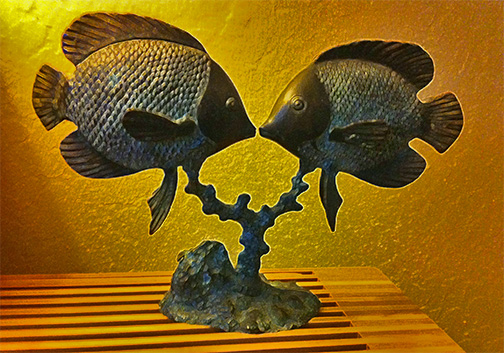Truth or Consequences.
 People discard a lot of what they once wanted with little or no understanding of the impact it has on our world. A deal they could not pass up, an impulse buy. Often fueled by boredom, or looking for novelty, they shop till they drop.
People discard a lot of what they once wanted with little or no understanding of the impact it has on our world. A deal they could not pass up, an impulse buy. Often fueled by boredom, or looking for novelty, they shop till they drop.
Branding, marketing and advertising companies are forever trying to make a consumer feel they must have this or that. Data is so targeted now that it’s likely you bought something today because you thought you wanted or needed it.
Did you really? How long will you be satisfied with your purchase? When will you tire of it and give it away? Do you know what happens to it after donation?
Do you know what resources were used to create that item and its afterlife potential? What is the real life cycle of your desire?
Former purchases end up in lots of places. I do shop second-hand and consignment stores and have noticed they are making a great effort to create a more upscale shopping environment; targeted merchandising, including having separate areas for the vintage and high-end. Many of these centers are for a good cause and help support your community. Not enough is said about the lives they have changed in their positioning. How is my purchase of a sculpture or a vase impacting our world and its people? Have I saved something? The above sculpture was purchased at Recovery Thrift which sponsors Teen Challenge. They provide housing and addiction treatment for youth, a cause I am happy to support.
Don’t get me wrong. I love good brand design, marketing and advertising. It’s my livelihood. I’m just asking you to think about what you buy and why. Transparency is a word that is thrown around a lot these days. But just how transparent are companies being? Should a label include things that might freak people out?
As in ‘this garment was made by a child who worked 18 hours today making 8 cents an hour without a meal break’? Would you still want to buy it? Fast fashion and disposable couture is fostering this kind of reality. How much petroleum or pesticides went into making it? Will it end up in a landfill?
Included are a few links that will help you scratch the surface of this topic.
http://www.weardonaterecycle.org/about/issue.html
http://www.ncbi.nlm.nih.gov/pmc/articles/PMC1964887/
I hope you will take some time to look more deeply into this and find it useful.
Every purchase is a vote for where you want our world to be. It’s a movement of choice. Ownership or loveship.
What I would like to see. Talking point-of-purchase that tells the truth about the consequences of our buying decisions that even the blind can understand. If you can’t read the label what good is it?
This week I went to buy some reading glasses that had a tiny warning label on the turnstile. It said they contained cancer-causing materials in the manufacturing of this item.
How is this possible, that reading glasses are made from cancer-causing ingredients? What about the person who made them?
We all need to pay attention and be mindful of what we buy. The fine print hides lots of shady facts. Look before you leap.
